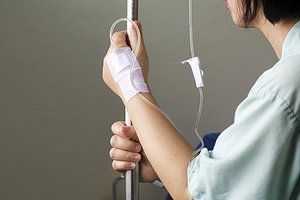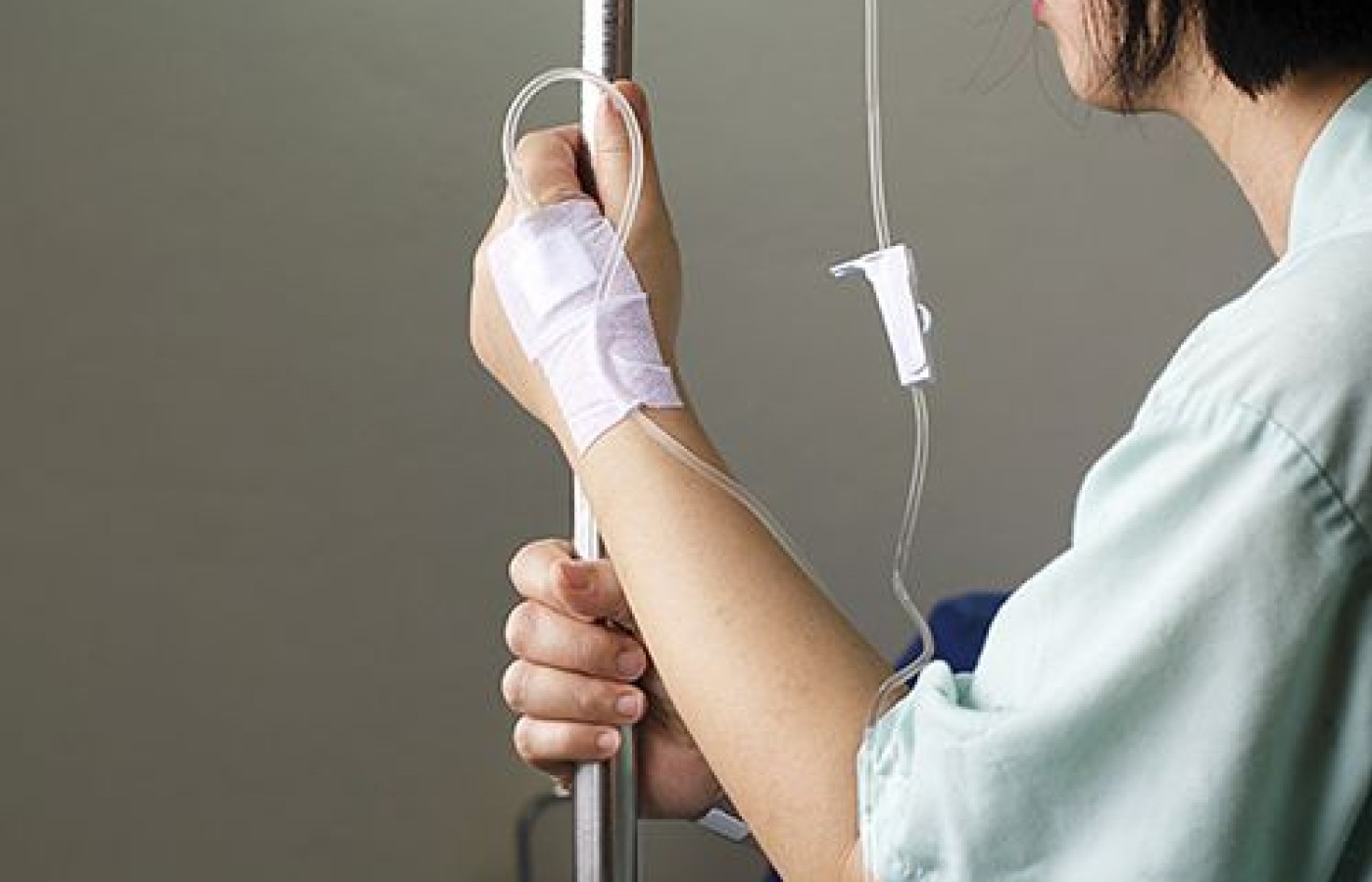Whether you accept it, avoid it or live somewhere in between, insurance coverage has become a defining issue for our profession. Patients increasingly expect to use their benefits, practitioners want to be compensated fairly for their time and expertise, and the system itself remains – at best – fragmented. The encouraging news is that coverage has expanded in meaningful ways. The challenging news is that reimbursement, across the board, remains inadequate.
Boosting Bone Marrow and Immune Function During Cancer Treatment
One of the main consequences of undergoing chemotherapy or radiation is damage to the bone marrow. This directly affects one's total immunity by impacting the production of marrow stem cells, white blood cells, red blood cells, and platelets. Most patients develop significant anemia and even thrombocytopenic purpura. The damage to immune agents is so significant that patients risk a reoccurrence of their original cancer, and are at increased risk for opportunistic infections.
Patients being treated for cancer in Western medicine hospitals in China are routinely encouraged to combine chemotherapy or radiation with Chinese herbs to minimize bone marrow damage and to mitigate other side effects. The best herbal therapy is customized to the patient's condition week-by-week throughout the course of treatment. However, certain prescriptions and herbal products can be given to patients without weekly adjustment that can provide significant support.
Medical Treatments
Chemotherapy began in 1943 with the therapeutic application of mustard gas to malignant lymphoma, and then in 1948 to infant leukemia. The cytotoxic approach has been developed and enhanced, continuing to this day. As everyone realizes, chemo is toxic to healthy cells, as well as malignancy.
In North America, chemotherapy is applied to most cancers, even when the science and demographics indicate limited or no effect. Cancers with a high proliferation rate respond well to chemotherapy, and include uterine, leukemia and lymphoma, accounting for about 3% of cancers. Chemotherapy has minimal and only temporary effect on cancers with a low proliferation rate such as lung, liver or the colon. The application of chemotherapy in these cancers induce serious side-effects of fatigue, nausea and immune inhibition, but more significantly, can accelerate a downward spiral ending in an earlier death. Chemotherapy damages normal tissue, destroys white blood cells, and damages the mucus-membrane lining of the gastrointestinal tract. It also damages neurons, causing peripheral neuropathies and loss of cognitive function. In addition, cancerous cells exposed to chemotherapy rapidly mutate, causing drug resistance. Multiple drugs are then given simultaneously.

Radiation is best applied in small or isolated tumors, such as tongue, nasopharyngeal, larynx and thyroid. It is the preferred treatment for prostate cancer, isolated lymphoma, and rectal cancer. It is also used to treat margins after surgical removal of a tumor found in the breast, lung, kidney, and brain. Radiation causes burning and the side effects of dry throat, fever, etc.
Combined TCM-Western Approach
The integration of Chinese herbal medicine with Western therapies for cancer has been studied extensively for the last 30 years. It is now customary to combine the two, with evidence showing improved immune function, increased survival rates, and reduction of common side effects. It also enhances the effectiveness of both chemo and radiation, allowing for smaller doses.
Side effect reduction is commonly used for digestive symptoms of poor appetite, nausea or vomiting, and diarrhea. Herbs are also used to reduce fever, canker sores, palpitation, insomnia, fatigue. Specific to our topic is the negative effects on bone marrow, affecting white blood cell count, red blood cell count, and platelet count.
The TCM strategies for minimizing the side effects of chemotherapy are these: replenish qi and blood, invigorate and harmonize spleen and stomach, nourish liver and kidney, and clear toxic heat, if present. The treatment principles for radiation are these: clear toxic heat, nourish yin to generate fluid, cool and replenish qi and blood, invigorate spleen and harmonize stomach, and nourish liver and kidney.
Treating Bone Marrow Damage
Both radiation and chemotherapy lower white blood cells (WBC), red blood cells (RBC) and platelets. The most serious consequence is the destruction of WBC neutrophils. In radiation therapy, counts can go as low as .6 x 109/l; (normal is 3.8 - 10.8 with optimal at 5.0 - 7.5).
Damage due to chemo is dependent on which chemo-toxic agents are used. Bone marrow suppression occurs one to three weeks after onset of chemotherapy, and continues for two to four weeks following completion of chemotherapy. In China, it is recommended that chemo/radiation treatment be discontinued when the WBC reaches less than 3.0 or platelets reach less than 80 x 109/l. Dangerously low levels of WBC would be <2.0 x109/l, and especially if neutrophils become less than 0.5. And yet, 28% of patients will show neutrophils dropping below 0.1, at which point there is great risk of bacterial septicemia.
Chinese Herbal Medicine
In China, it has been determined that secondary infections are markedly reduced by taking Chinese herbs before, during and after administration of radiation or chemotherapy. Treatment principles are to tonify qi and blood, nourish kidney and liver yin and jing, clear toxic heat, and boost yang in yang deficient patients. According to, Alleviating the Side Effects of Cancer Treatment (People's Medical Publishing House, 2007) there are two different ways to deal with bone marrow suppression. The first is to apply a basic chemotherapy or radiation formula further modified to address bone marrow suppression. The second is to directly address bone marrow suppression, regardless of whether it is due to radiation or chemotherapy. (Doses here represent ingredient proportions based on a 100g. prescription.
The basic chemotherapy formula is as follows: huang qi (Radix Astragali) 12g., dang shen (Radix Codonopsis) 12g, bai zhu (Rhizoma Atractylodis Macro) 9g, nü zhen zi (Fructus Ligustri Lucidi) 8g, gou qi zi (Fructus Lycii) 8g, tu si zi (Semen Cuscutae) 8g, ban xia (Rhizoma Pinelliae) 8g, fu ling (Poria) 9g, chen pi (Pericarpium Citri Reticulatae) 8g, ji nei jin (Endothelium Corneum Galli Gigeriae) 8g, shen qu (Massa Fermentata) 8g.
In this formula, huang qi, dang shen and bai zhu tonify qi for 34% of the formula, with tu si zi tonifying the yang and gou qi zi nourishing blood and yin. Ban xia, fu ling and chen pi are three of the four herbs found in Er Chen Tang. When combined with ji nei jin and shen qu, they address stomach phlegm and food stasis, which commonly manifests during chemotherapy, causing nausea.
For Radiation therapy, the basic formula is as follows: huang qi (Radix Astragali) 11g, bai zhu (Rhizoma Atractylodis Macro) 7g, sheng di huang (Radix Rehmanniae) 11g, mai men dong (Radix Ophiopogonis) 7g, shi hu (Caulis Dendrobii) 7g, nü zhen zi (Fructus Ligustri Lucidi) 7g, ban xia (Rhizoma Pinelliae) 7g, zhu ru (Caulis Bambusae) 7g, huang lian (Rhizoma Coptidis) 6g, jin yin hua (Flos Lonicerae) 7g, fu ling (Poria) 8g, chen pi (Pericarpium Citri Reticulatae) 7g, ji nei jin (Endothelium Corneum Galli Gigeriae) 7g.
Here, jin yin hua and huang lian clear heat due to burn, while mai men dong, shi hu and nu zhen zi nourish the yin. Additional herbs support qi and blood, and clear phlegm and food stasis. For either chemotherapy or radiation, the basic formula can be modified to reestablish bone marrow integrity. Choose and add from he shou wu (Radix Polygoni Multiflori), shu di huang (Radix Rehmanniae Praep), dang gui (Radix Angelicae Sinensis), rou cong rong (Herba Cistanches), bu gu zhi (Fructus Psoraleae), e jiao (Asini Corii Gelatinum), or gui ban (Concha Chinemys/Testudinus).
Treating Bone Marrow Directly
One can use the individualized formulas above, or apply a dedicated formula for replenishing bone marrow directly. The herbs are: dang shen (Radix Codonopsis), tai zi shen (Radix Pseudostellaria Heterophylla), ren shen (Radix Panax Ginseng), huang jing (Rhizoma Polygonati), dang gui (Radix Angelicae Sinensis), shu di huang (Radix Rehmanniae Praep), e jiao (Asini Corii Gelatinum), he shou wu (Radix Polygoni Multiflori), gui ban (Concha Chinemys/Testudinus), and ji xue teng (Radix Spatholobi/ Millettiae).
Here, dang shen, tai zi shen, ren shen and huang jing tonify qi, while dang gui, shu di huang, e jiao and he shou wu tonify blood. Gui ban astringes the formula into the bone marrow and ji xue teng helps bone marrow distribute blood outwards. The lead herb, xian he cao, is classically assigned to the stop bleeding category. Modern research indicates a synergistic effect of boosting platelets and red blood cells.
Overall, integrating Chinese herbal therapy with conventional chemo or radiation therapy has been shown to help bone marrow recover from damage and significantly promotes production of blood cells and immune agents.
Resources:
- Alleviating the Side Effects of Cancer Treatment, 2nd Edition, Zhang Dai-zhao etc, People's Medical Publishing House, Beijing, 2007.
- Cancer Treatment with Fu Zheng Pei Ben Principle, Pan Mingji, Fujian Science, 1992.
- Integrating Conventional and Chinese Medicine in Cancer Care, A Clinical Guide, Tai Lahans, Churchill Livingstone, 2007.
- Management of Cancer with Chinese Medicine, Li Pewen, Donica Publishing, 2003.



